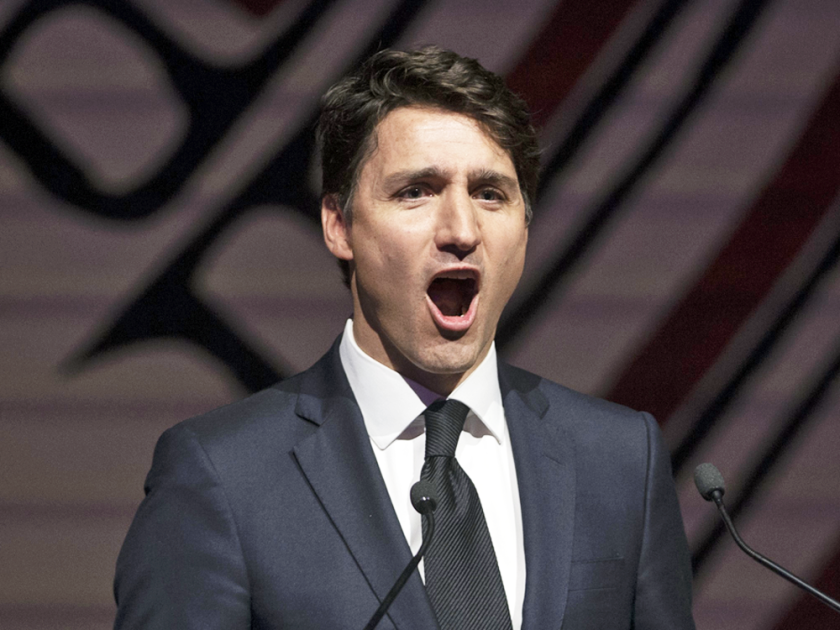There are precedents for the extraordinary swoon in popularity the governing Liberals are currently enduring, and have endured — 20 points in the polls in two and a half years, according to data collected by the CBC’s Poll Tracker site — but you have to go back some way to find one.
The Harper government stayed within a comparatively narrow band throughout its time in office, never falling below 30 per cent, never rising much above 40. The Chretien government likewise lost only a little altitude over the years, remaining well above 40 per cent in most polls until the sponsorships scandal brought them down to earth.
But a government falling this far, this fast, in its first term? To have done so, what is more, without even the aid of a recession — with unemployment and mortgage rates both in single digits, and separatism (in Quebec, at least) quiescent? The only parallel that comes to mind is with the first Mulroney government.
That government, it will be recalled, managed to recover, winning re-election on the strength of its signature free trade initiative and growing public doubts about the opposition leader. But with less than six months to go until the election, it is unclear what similar combination of circumstances can revive the Trudeau Liberals.
- Liberals, Trudeau have hit new low, but election poll suggests there’s still hope for them
- Kelly McParland: The election is Scheer’s to lose — and here’s why he just might
- John Ivison: Trudeau is half as popular as he used to be
Poll Tracker now has them an average of seven points behind the Conservatives. There are reputable pollsters who put them as much as 13 points behind. Worse still are the numbers in the regions, where elections in Canada are won and lost. They are now 10 points back in B.C., where they led by five in the last election, the party’s best showing there since 1968. They trail narrowly in Ontario, a province they won by 10 points last time. Likewise for Atlantic Canada — where they won by nearly 40 points.
STORY CONTINUES BELOW
Even in Quebec, where as late as the start of this year they looked likely to pick up a dozen seats or more — enough to make up for their projected losses elsewhere — their lead is now down to just 10 points, the same as in 2015. Not so long ago, the worst-case scenario for the party was that it would be reduced to a minority. As things stand, that’s about the best it can hope for.
The good news is that disaffected Liberal voters have not coalesced around a single opposition party; rather, some support has gone to the Conservatives, some to the Greens, some to the Bloc Québécois. Neither has the NDP, whose fortunes tend to move inversely with those of the Liberals, shown much strength. The bad news is that the hoped-for split on the right, via Max Bernier’s People’s Party, has not yet materialized.
It’s easy to identify the source of the Liberals’ most recent drop in the polls: the 11 points it has given up since the end of January coincide neatly with the detonation of the SNC-Lavalin scandal. But the larger point is that the party has been bleeding support since the beginning of 2017. Though the party recouped some of its losses from the India trip disaster last year, it was only to levels that previously would have been considered low points.
Today’s Liberal party has taken the cult-worship of the leader to new heights
It is difficult to avoid the conclusion that the party’s unpopularity is connected to that of its leader. That’s true for most parties at most times, of course: Canadian politics is unusually fixated on the leader. But today’s Liberal party has taken the cult-worship of the leader to new heights. Indeed, it is almost wholly his creation; he alone could have raised the Liberals from the near-death experience of 2011. Or so it must have seemed to the party, which was thus spared any more searching examination of its predicament.
Dynastic politics has a potency none of us likes to admit. For as long as the public’s fascination with the son of Pierre Trudeau lasted, the party milked it to its advantage. He was on every magazine cover, in every viral video, did every interview or photo-shoot. But there was always a danger in this: the more fiercely the flame of infatuation burns, the more quickly it goes out.
And the public would appear to have fallen desperately out of love with Justin Trudeau. The latest Angus Reid poll gives him an astonishing net approval rating of minus 39 (28 per cent approval, 67 per cent disapproval). It isn’t that there is any great wave of enthusiasm for his rivals: among party leaders, only the Green Party’s Elizabeth May enjoys a positive net approval rating. But none excites anywhere near such antipathy.
Is there a big, polarizing idea the Liberals can own?
The problem seems less to do with any one incident than with a slowly cementing impression: of a leader who talks a good game but does not deliver; who is more concerned with symbols than substance; who spends more time posturing on social issues than attending to the nuts and bolts of governing; whose record of broken promises and centralization of power looks more like the cynical calculations of politics as usual than the shiny idealism he once seemed to embody.
There is of course still time to turn things around. Campaigns matter, and much can happen even before the campaign. But as much can happen that hurts the Liberal cause as helps. The simmering dispute with China, with Canadian lives on the line; the unfinished business over NAFTA, with the renegotiated treaty no closer to approval by the U.S. Congress than it was seven months ago; the trial this summer of Vice Admiral Mark Norman, whose defence alleges political interference in a police investigation, raising echoes of the SNC-Lavalin affair — all these threaten to disrupt any Liberal recovery strategy.
Free trade was a big idea that polarized opinion, with the Mulroney Conservatives owning one side of the debate. Is there a big, polarizing idea the Liberals can own? Or will they inevitably have to share it with three other parties on the left?



























